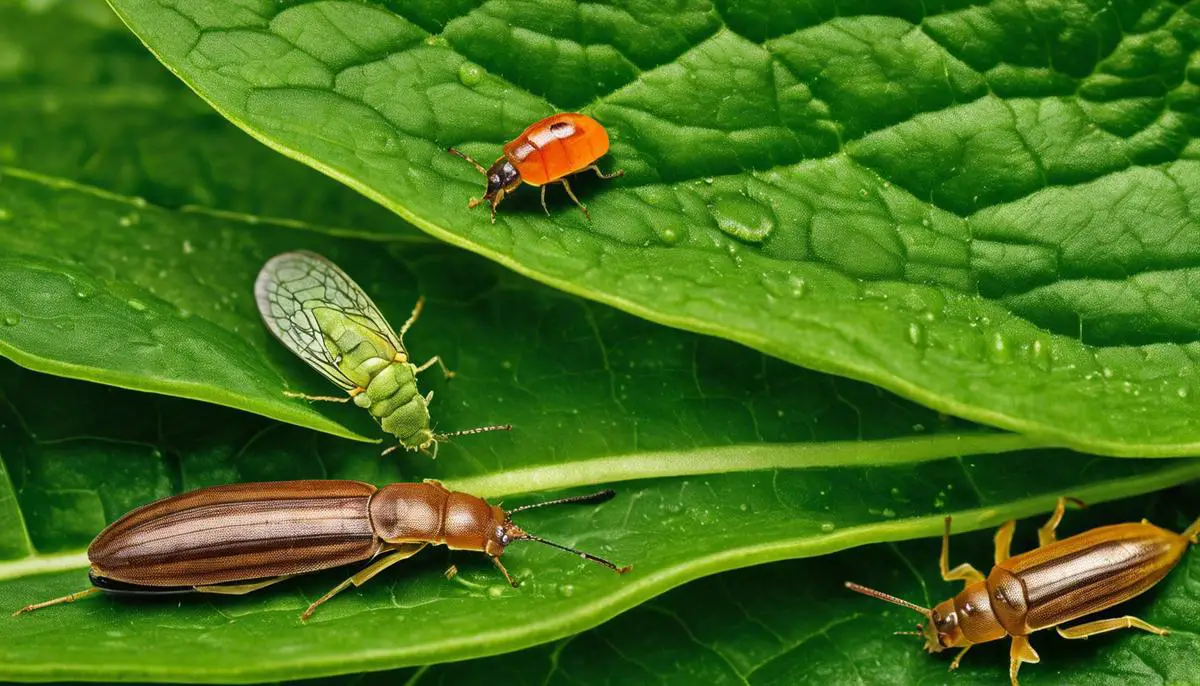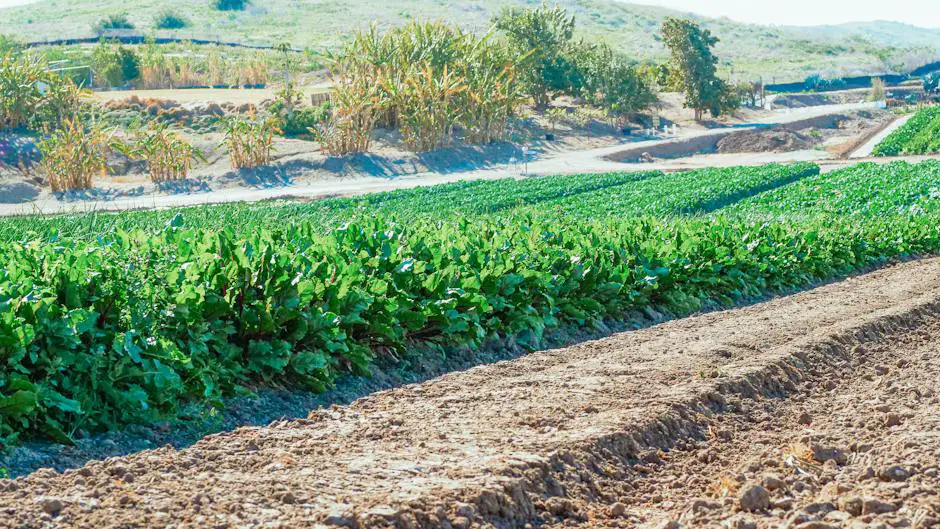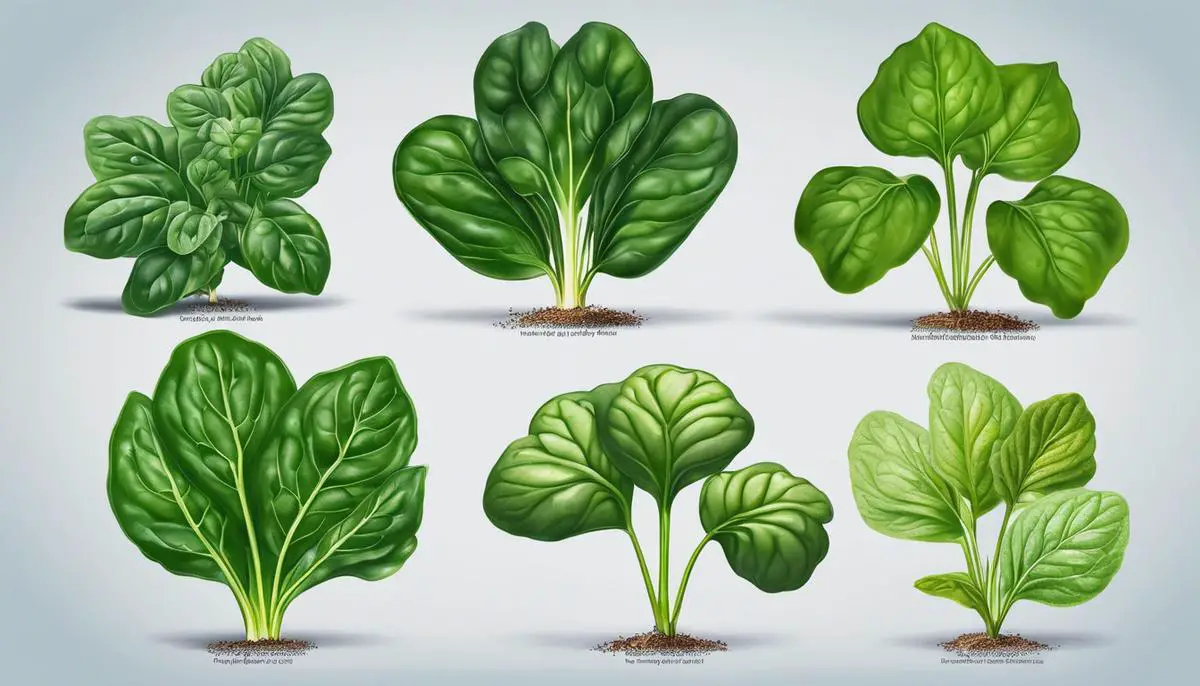Spinach, a leafy green powerhouse packed with nutrients, holds a significant place in the global market for fresh and healthy produce. However, the cultivation of this superfood faces numerous challenges, most notably from a myriad of pests and diseases that can decimate crops if left unchecked. Understanding the complex dynamics of these nuisances is of paramount importance to ensuring the health and abundance of harvests. This essay embarks on a comprehensive exploration of spinach’s most common adversaries, starting with the identification of pests that stealthily wreak havoc in the garden. As we venture further, we’ll dissect the intricacies of diseases that plague the leaves of spinach, unraveling their lifecycles and how they spread across the fields.
Identification of Spinach Pests
The Primary Pests Plaguing Spinach Crops: An Overview
Spinach, a leafy green vegetable known scientifically as Spinacia oleracea, is not only a staple in our diets but also a significant crop in agriculture. It is a rich source of vitamins and minerals, and its cultivation spans numerous regions worldwide. However, like any other agricultural endeavor, spinach farming is susceptible to attacks from various pests that can undermine crop health, yield, and quality.
Reader Poll: What online courses would interest you?
One of the foremost pests that pose a threat to spinach is the leafminer (family Chrysomelidae). These small insects lay their eggs on spinach leaves, and upon hatching, their larvae burrow into the leaf tissue, creating distinct winding tunnels. This not only damages the leaf aesthetically, rendering it unmarketable, but also impairs the photosynthetic capability of the plant, ultimately affecting its growth vigor.
Another significant adversary of spinach crops is the aphid, specifically the green peach aphid (Myzus persicae). Aphids are tiny, sap-sucking insects that can rapidly colonize the undersides of leaves and even young stems. Their feeding activity can cause leaves to distort, and the secretion of their waste, known as “honeydew,” can lead to the growth of sooty molds. Moreover, aphids act as vectors for various plant viruses, which can have devastating effects on the crop.
The spinach crown mite (Rhizoglyphus sp.), though less visible to the naked eye, is a menace to spinach growers. These microscopic pests feed on the plant at the crown level, the point where roots and leaves meet, potentially causing stunted growth or, in severe cases, plant death.
Subscribe to our newsletter!
Slugs are an additional concern, particularly in moist agricultural environments. These mollusks can voraciously consume large portions of spinach leaves, especially in the seedling stage or during cool and damp weather conditions. Their feeding activity not only creates unsightly holes but also introduces contamination that fails to meet produce quality standards.
Moreover, caterpillars from various moth and butterfly species, such as the beet armyworm (Spodoptera exigua) and the cabbage looper (Trichoplusia ni), are commonly found feeding on spinach. Their relatively large appetite and ability to chew through leaves can cause substantial defoliation if left uncontrolled.
Management of these pests comprises a spectrum of strategies including cultural practices, such as crop rotation and sanitation to minimize pest habitat, as well as the utilization of insect-resistant spinach varieties. Biological control agents, beneficial insects that prey on harmful pests, play a pivotal role in sustainable pest management. Additionally, the careful application of approved insecticides may be implemented as a last resort, bearing in mind the balance between pest control and environmental impact.
Understanding these primary pests and their effects on spinach crops is crucial for developing effective management strategies, ensuring not only the success of the crops but also the safety and nutritional value of the produce being delivered to market.

Spinach Disease Overview
Moving beyond the realm of invertebrate pests, spinach plants are often victims of an array of diseases caused by various pathogenic microorganisms. Understanding the etiology and pathogenesis of these diseases is imperative for devising effective management strategies and thereby securing the yield and quality of spinach crops.
One of the most prevalent diseases is Downy Mildew, caused by the oomycete Peronospora farinosa f. sp. spinaciae. This disease manifests as yellowish patches on the leaf which, upon closer inspection, may reveal a delicate, cotton-like growth of spores on the leaf undersides. Downy Mildew thrives in moist, cooler conditions and often necessitates the implementation of resistant plant varieties coupled with favorable cultural practices to control its spread.
Anthracnose, incited by the fungus Colletotrichum spinaciae, is another affliction where one might observe small and irregular yellow or tan lesions that can coalesce, leading to extensive leaf blight. Since the pathogen can persist in crop debris, effective disease management hinges upon rigorous sanitation and the use of disease-free seeds.
Fusarium wilt, caused by Fusarium oxysporum f. sp. spinaciae, presents another formidable challenge. This soil-borne fungus invades the plant through the root system, inciting vascular wilting and often leading to plant demise. Disease management is complex, often involving long-term soil health strategies including crop rotation with non-host plants and soil solarization.
Lastly, White Rust, caused by the fungus Albugo occidentalis, should not be overlooked. Characterized by white, pustule-like blisters on the leaf and stem surfaces, this disease can proliferate rapidly under wet conditions. Control measures include planting resistant varieties and applying fungicides judiciously, but cultural practices such as maintaining good air circulation through proper spacing are also key.
It is paramount that these diseases are recognized early in their course and managed promptly through a combination of cultural, biological, and chemical means as part of an integrated pest management approach. Publicized research findings and extension services play an essential role in disseminating knowledge about these diseases, aiding producers in safeguarding their crops against these insidious plant pathogens. By maintaining a balance between plant health and ecosystem integrity, we can ensure the continued productivity and environmental sustainability of spinach agriculture.

Photo by stephanie_moody on Unsplash
Management and Control Strategies
Understanding the intricate relationship between spinach crops and diseases is paramount in the agricultural world. Spinach, a nutritious leafy green, is susceptible to an array of pathogens which threaten its vitality and yield. Among these diseases,
Downy Mildew
, caused by the oomycete Peronospora farinosa, poses a significant risk. This pathogen thrives in cool and humid conditions and can be recognized by yellow lesions on the leaf surface, with the corresponding undersides exhibiting a purplish sporulation. To manage Downy Mildew, cultural practices such as crop rotation, well-drained soil, and adequate plant spacing can reduce the moisture that propagates the disease. The utilization of fungicides may be employed, although it should adhere strictly to guidelines to prevent resistance buildup.
Anthracnose
, another formidable adversary, is incited by the fungus Colletotrichum spinachae. It presents as small, water-soaked lesions on leaves which later turn tan and develop a characteristic concentric ring pattern. To contend with Anthracnose, the adoption of resistant varieties and sanitation measures, like the removal of infected debris, are key strategies.
Fusarium wilt
, caused by Fusarium oxysporum f.sp. spinaciae, presents a unique challenge due to its soil-borne nature. The disease manifests through yellowing and wilting of leaves, often leading to plant death. Management tactics favor the use of resistant cultivars and soil solarization – a method that uses the sun’s energy to heat and disinfect the soil.
White Rust
, attributed to the pathogen Albugo occidentalis, showcases white, blister-like pustules on the underside of spinach leaves. Maintaining dry foliage through drip irrigation and the timely application of appropriate fungicides can reduce the spread of White Rust and its impact.
The collective understanding of these diseases scales with the necessity for early detection and prompt management. An integrated pest management (IPM) approach fosters the use of multiple strategies—cultural, biological, chemical—deployed in a synergistic manner to manage pest and disease pressures holistically and sustainably. This involves routine field scouting to detect problems early, accurately diagnosing disease pressures, and implementing a targeted response that minimizes potential harm to non-target organisms and the environment.
Furthermore, the role of research is to elucidate novel insights into disease resistance and management practices, while extension services bridge the gap between research and the hands-on application by growers. It is through these conduits of knowledge dissemination that growers can stay abreast of the best practices and latest advancements in spinach disease management.
Ultimately, the goal is to preserve the health of the spinach plant while maintaining ecosystem integrity. This not only ensures the crop’s success but secures the quality of produce that reaches consumers, thereby supporting the agriculture industry’s vital role in providing nutritious food.

Impact of Environmental Conditions
Environmental Factors Shaping the Battle Against Spinach Pests and Diseases
Environmental conditions play a crucial role in the dynamics of plant diseases and insect populations. Spinach growers must grapple with a range of environmental factors that can alter the prevalence and intensity of pests and pathogens. This article delves into the specifics of how climate and other environmental factors influence the delicate balance between spinach health and the pressures exerted by pests and diseases.
Temperature and Humidity’s Impact on Disease Development
Spinach plants are prone to a range of diseases whose pathogens thrive under specific environmental conditions. Elevated temperatures and high humidity are the perfect crucible for fungal and oomycete infections to proliferate. For example, warm, moist air facilitates the life cycle of many fungi, such as those causing leaf spots. Conversely, extended periods of high heat can suppress certain pathogens but may stress plants, making them more vulnerable to pest attacks.
Water and Its Dual Role
Irrigation is vital for crop growth, yet water management is a double-edged sword. Overhead irrigation can create an environment conducive to disease outbreaks, splashing spores onto spinach leaves and providing the moisture necessary for their germination and growth. On the flip side, a well-drained soil system can curtail root diseases, underscoring the importance of precision irrigation and proper field construction.
Climatic Variability Influencing Pest Populations
Climate change and variability introduce new challenges for those protecting spinach crops. Unseasonal temperature shifts and changing precipitation patterns can disturb the lifecycle of insects, sometimes giving an advantage to pests by expanding their overwintering range or increasing their reproductive rate. Additionally, severe weather events may damage crops directly, opening the gateway for opportunistic pests to further exploit weakened plants.
The Role of Plant Microbiota and Ecosystem Diversity
Microorganisms living in the rhizosphere (root zone) and on the phytobiome (entire plant) are allies in the fight against pathogens. Beneficial bacteria and fungi can outcompete harmful organisms, while diverse agroecosystems tend to have more natural enemies to keep pest populations at bay. Encouraging environmental conditions that foster these beneficial communities is a key strategy in a resilient agricultural system.
Soil Health and Nutrient Management
Soil composition and fertility also exert strong control over spinach plant health. Nutrient imbalances can either increase the susceptibility of plants to disease or exacerbate pest issues by stimulating succulent growth, which is more inviting to herbivorous insects. Providing plants with a balanced diet and maintaining optimal soil health are therefore foundational measures for managing pest and disease pressures.
Concluding Considerations
Understanding the variables that influence pests and diseases in spinach cultivation is not merely an academic exercise; it is an essential component of successful agricultural practice. Vigilance in monitoring weather and soil conditions, alongside proactive management strategies, will continue to be indispensable as environmental patterns evolve. Adaptive measures grounded in scientific knowledge will equip growers to face future challenges, enhancing sustainability and ensuring bountiful, high-quality spinach yields.

Emerging Challenges and Research
Temperature and Humidity’s Impact on Disease Development
Spinach, a cool-season crop, faces profound challenges with the fluctuations in temperature and humidity. Elevated humidity levels often create microclimates within the crop canopy, which can be favorable to the development and spread of fungal and bacterial pathogens. Conversely, low temperatures can slow plant growth, rendering spinach more susceptible to certain pests and extending the period under which they can cause damage. The delicate balance required for optimal spinach health necessitates careful monitoring and control of greenhouse environmental conditions and the vigilant observation of field crops.
Water and Its Dual Role
Water is essential for spinach crop growth, but it also plays a critical role in disease dissemination and establishment. Excess water, from either irrigation or rainfall, can facilitate the spread of plant pathogens via splashing, and can also increase local humidity, compounding the issues mentioned previously. Effective water management, therefore, is not merely about providing adequate water for plant growth but also involves timing and delivery methods that minimize the risk of disease proliferation.
Climatic Variability Influencing Pest Populations
Climate change introduces a level of unpredictability in pest populations that can complicate the management strategies for spinach growers. An unseasonably warm winter, for example, can result in the early emergence of insect pests or an increase in their generational turnover, leading to larger populations. Monitoring and predictive modeling are becoming indispensable tools in anticipating these shifts and adjusting pest management practices accordingly.
The Role of Plant Microbiota and Ecosystem Diversity
The complex interplay between spinach plants and their associated microbiota is an area of intense study. Plant roots host diverse microbial communities that can influence plant health and disease resistance. Encouraging beneficial microbes through crop management practices can boost the plant’s inherent defense mechanisms. Similarly, promoting overall ecosystem diversity, including beneficial insects, can suppress pest populations and reduce the reliance on chemical interventions.
Soil Health and Nutrient Management
Soil health has a direct impact on plant vitality and stress tolerance. Management practices that enhance soil structure and fertility, such as the inclusion of organic matter and cover cropping, can improve spinach resilience against diseases and pests. Balanced nutrient management further supports plant defense systems but requires an understanding that over-fertilization can sometimes increase susceptibility to specific pests and diseases.
Concluding Considerations
The exigencies of modern spinach cultivation demand a synthesis of traditional agricultural practices with innovative research. Ongoing studies explore the genetic avenues for disease resistance, novel biological control options, and the efficacy of integrated pest and nutrient management systems. Dissemination of findings is crucial for continued success. Through such an integrated approach, it serves the dual purpose of ensuring high-quality spinach production and the sustainability of agricultural ecosystems.

Armed with an arsenal of integrated management strategies and an awareness of the role environmental conditions play in pest and disease development, spinach growers can stand resilient in the face of these biological challenges. As we look to the horizon, the shadow of emerging threats looms, necessitating a commitment to ongoing research and adaptation of new practices in agricultural science. The enduring health of our spinach crops depends upon such proactive measures, ensuring that this valuable vegetable continues to grace our tables with its nutritional benefits for generations to come.

